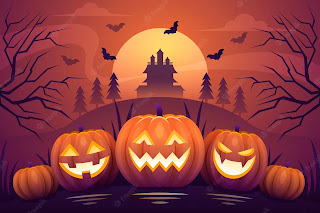Happy Halloween!
As 31 October looms, many people around the country will once again be marking Halloween with what have become traditional activities – carved pumpkins, trick-or-treating and fancy dress. Many people herald this as an Americanised festival of ghosts and ghouls – but did you realise that most of the activities associated with this time of year are rooted in European folklore and tradition?
The pumpkin carved into a jack-o-lantern, for example, is firmly an American introduction, but it quite literally has its roots on the other side of the Atlantic – where people have been carving turnips and other root vegetables for centuries, to ward off evil spirits. This year, English Heritage is calling on people to remember the turnip – and other Halloween traditions – as they mark this haunting time of year.
HALLOWEEN
The modern-day Halloween is largely agreed to have originated from the ancient Celtic festival of Samhain, held around 1 November, the date that marked the transition from autumn to winter. It was this time of year where people believed the boundary between the worlds of living and dead became blurred, and was when the souls of the dead were said to revisit their homes.
In the era of Christianity, this tradition became absorbed into the celebration of All Saints Day, held on 1 November, dedicated to honouring all saints and martyrs. The 2 November became All Souls’ Day, a day to honour the dead, and here many of the Celtic traditions, such as bonfires, parades and dressing up in costume, blurred with Christian celebrations, to form festivities accepted, and even encouraged, by church authorities.
All Saints Day later became known as All-Hallows and from this the night before came to be referred to as All-Hallows Eve. From this term derived the name ‘Halloween’, the name for the beginnings of the festival that was celebrated across Europe in the early Middle Ages, and stuck even as the religious celebrations fell out of favour in later centuries.
JACK O’LANTERNS
The practice of decorating ‘jack o’lanterns’ is believed to have originated from an Irish folktale – about a man named Jack cursed to spend all of time roaming the earth with only a burning coal (inside a carved out turnip) to light the way, as his punishment for trying to trick the devil.
Across the British Isles people used turnips, or sometimes beets or potatoes, to make their own versions of these lanterns – carving scary faces into them and placing them near doorways or windows to frighten away Jack and other wandering evil spirits.
During the 19th Century, immigrants to the USA took these traditions with them, and swiftly discovered that pumpkins, the native American fruit, are far easier to carve into elaborate faces and shapes, and make perfect jack o’lanterns.
ISON_151020_Turnips-599221.jpg
Turnip carving at Dover Castle
TRICK OR TREATING
The modern form of ‘trick or treating’ probably has its origins in early medieval pageantry too. Around this time of year, usually just before All Souls’ Day, poorer members of society would go from door to door, receiving food (often pastries or specially baked ‘soul cakes’) in return for their promise to pray for the household’s dead relatives. These practises were even encouraged by the church, and became known as ‘going a souling’.
Traditions of dressing up also became linked to the custom, particularly in Scotland, where it was known as ‘guising’. Like many such customs, dressing up had its roots in superstition, as people wore masks or costumes to either avoid being recognised by or to placate the ghosts and spirits that they believed crossed into the physical world at this time of year.
These traditions had died out, but for a few scarce local celebrations, by the time what we know now as ‘trick or treating’ because associated with Halloween time in America, but it seems likely that this modern day activity was inspired by the traditions of times gone by.
GHOST STORIES
Tales of spirits and ghosts returning from the dead to haunt places and people they have left behind have long featured in the folklore of various cultures across the globe. Stories such as these were at the heart of early All Hallows or Samhain celebrations, and led to many of the superstitions that became customs around this time of year.
Stories of spirits and ghosts exist throughout cultures across the world, and not necessarily connected to the Halloween season, but in Europe the supposed blurred boundaries between life and death at the end of autumn probably encouraged these beliefs and tales. Even the Catholic church had its own ghost stories, often emphasising morality and the need to live a good, Christian life, and these may have in turn formed part of the festival of All Souls Day.

Comments
Post a Comment